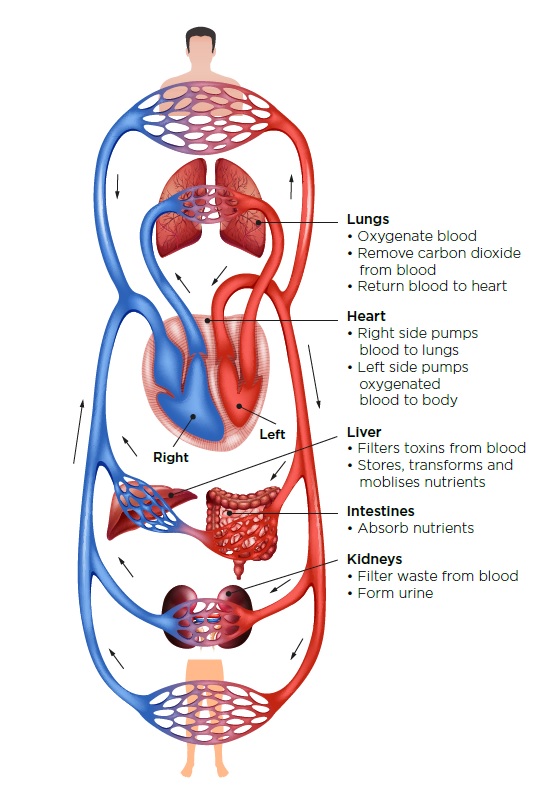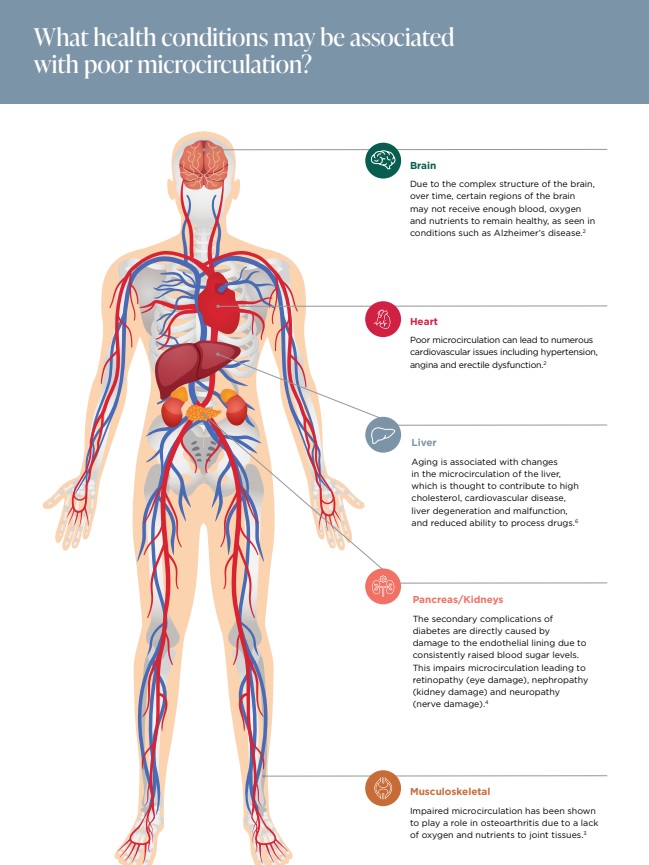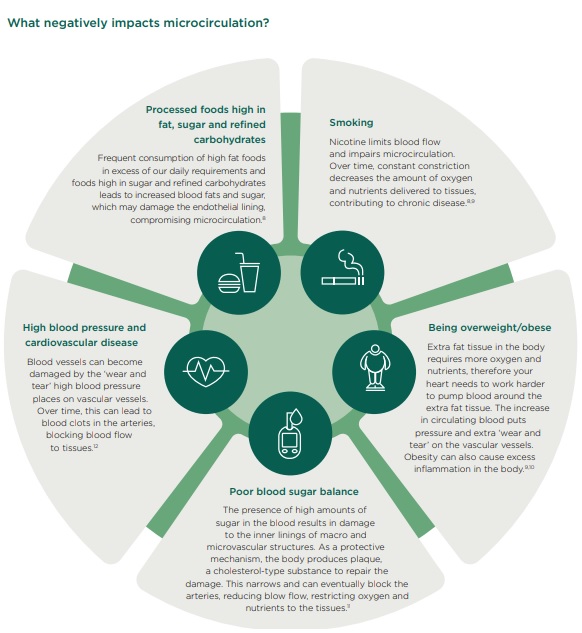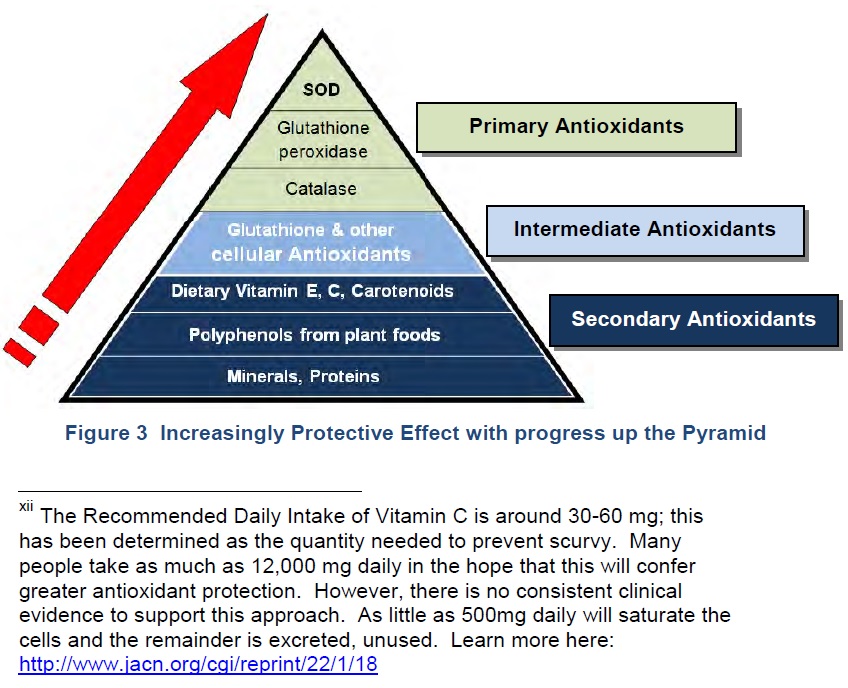Why is microcirculation so important?
A healthy microvascular system is essential to the health of the entire body. It functions to supply blood, oxygen and nutrients to all of the body’s cells, tissues and organs.1 As such, poor microcirculation can lead to the initiation and gradual worsening of many chronic diseases including cardiovascular disease, diabetic complications and osteoarthritis.2
First a quick lesson on the circulatory system

Blood must circulate to sustain life and the health of all cells and tissues. The circulatory system or cardiovascular system is an organ system that transports nutrients, oxygen, carbon dioxide, and hormones through the blood to all the tissues and cells of the body to provide nourishment and to support their function.
It also carries waste away from the cells and tissues for removal from the body to maintain their health.3
On the macrovascular level, the heart pumps blood around the body through a network of veins and arteries, which rapidly transports oxygen-rich blood to, and oxygen-poor blood from, organs.3
On the microvascular level, blood flows from the arteries, branching into smaller blood vessels that form an interconnected network of capillaries, which ensure nourishment of all cells.3
The movement of blood in and out of cells and tissues is orchestrated by constriction and dilation of blood vessels. A key molecule in this process is nitric oxide (NO), which is produced and regulated by a type of cell that lines the entire vascular system (endothelial cells).3
Damage to these cells can lead to disease, this is because
the supply of oxygen and nutrients to the tissues, and the
ability to carry waste products away, is reduced. As such, poorly functioning endothelial cells are associated with certain diseases including heart disease, erectile dys-function, diabetes, osteoarthritis, and neurodegenerative conditions.2

Both diet and lifestyle factors can impact microcirculation and therefore have a significant effect on your health. Talk to your practitioner who can work with you to identify factors that may be putting you at risk and guide you through strategies to help improve microcirculation.

How can you improve your microcirculation?
Antioxidants: Quite simply, antioxidants ‘neutralise’ unbalanced free radicals – highly reactive molecules that can cause damage to the body and have been shown to negatively impact microcirculation. In that sense, antioxidants are essential tools for preventing uncontrolled cellular damage. Appropriate antioxidant reserves are one of the cornerstones of cellular defence.
Many myths surround the concept of antioxidants and it is important to know that the most powerful antioxidants are produced by the cells themselves. These cellular antioxidants are literally millions of times more powerful in their effect than those derived from foods or supplements. Vitamins C & E, beta-carotene, and polyphenols, even at high doses, have only a fraction of the antioxidant potential of the cell’s own antioxidants.19
Many of the foods being promoted as antioxidant-rich sources include pomegranate juice, grape juice, green tea and berries, especially blueberries. These foods contain a wide array of beneficial bioactive compounds but nevertheless as antioxidants, they also simply quench free radicals one-for-one as does Vitamin C.
The following table shows the hierarchy of antioxidants:

Eating a healthy diet is essential and one of the main ways of improving microcirculation. Many plant foods and herbs contain nitrate, which the body will convert to Nitric Oxide – a key molecule that supports healthy microcirculation.13 In addition, certain plant foods and herbs contain polyphenols which not only help this process, but also protect the cells of the digestive tract.13 Certain foods and herbs have been shown to improve microcirculation2 – talk to your practitioner about ones that might be suitable for you.
Antioxidants protect against reactive oxygen species – highly reactive molecules that can cause damage to the body and have been shown to negatively impact microcirculation. Dietary antioxidants not only protect the cells of the cardiovascular system, they also help to stop LDL cholesterol being turned into plaques on the artery walls, which can inhibit blood flow.14 Increasing your fruit and vegetable intake will ensure you get a wide variety of protective antioxidants and polyphenols.14
Lifestyle modifications to improve microcirculation:
- Increase physical exercise – Alongside diet, moderate exercise is perhaps one of the most effective ways to improve microcirculation as the heart must pump harder to meet the increased oxygen demands of the muscles. Exercise also increases blood flow to facilitate effective exchange of oxygen and carbon dioxide.15
- Quitting smoking/vaping7,16
- Losing weight9,10
- Staying hydrated17
- Reducing stress18
Always seek the advice of a qualified and registered Naturopath who has the education and training to assess your personal needs. Never self-prescribe.
Above information courtesy of: MediHerb and Dr Christine Houghton
MediHerb references available on request
19 Switched On – Harnessing the Power of Nutrigenomics to Optimise Your Health; Christine Houghton, 2nd ed. 2016
